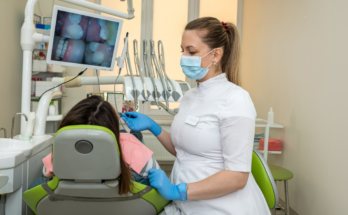The field of orthopedic surgery has witnessed significant advancements over the years, with one of the most promising developments being self-healing trauma implants. These innovative devices are designed to aid the recovery process following bone fractures, providing a more efficient and potentially less invasive treatment option. Self-healing implants utilize cutting-edge technology to respond dynamically to the body’s healing processes, ultimately enhancing patient outcomes.
As research and development in this area continue to expand, various trauma implants manufacturer are at the forefront of bringing these revolutionary products to market. These companies are focused on creating implants that support bone healing and actively participate by releasing bioactive substances or adapting their structure as needed. By doing so, they aim to reduce recovery times and improve overall success rates for fracture treatments.
Ortho implants have traditionally been crucial in stabilizing fractures and ensuring proper alignment during healing. However, self-healing implant technology has the potential for even greater advancements in orthopedic care. These new-generation ortho implants could significantly transform how surgeons approach fracture management by offering solutions that work synergistically with natural biological processes, paving the way for faster recoveries and enhanced patient experiences.
Self-Healing Materials Used in Implants for Trauma
The science behind self-healing materials used in trauma implants is a fascinating intersection of bioengineering and material science, promising to revolutionize how we approach medical treatments. At the heart of this innovation are biocompatible materials that can integrate seamlessly with human tissue, minimizing the risk of rejection and promoting faster recovery.
Self-repairing polymers are one of the key components in these smart materials for implants. These polymers can heal themselves after damage, much like how human skin repairs a cut. This self-healing property is achieved through various mechanisms, such as reversible chemical bonds or microcapsules filled with healing agents that release upon damage.
Bioengineering advances have enabled researchers to design these smart materials specifically for medical implants. The goal is to create implants that support physical structures and actively participate in the healing process by responding dynamically to changes within the body.
By harnessing these cutting-edge technologies, scientists aim to develop implants that offer improved durability and longevity, reducing the need for revision surgeries and enhancing patient outcomes. As research continues, self-healing materials hold immense potential for transforming healthcare by providing more innovative solutions tailored to individual needs.
Benefits of Self-Healing Implants for Bone Fractures
Self-healing implants are revolutionizing the field of orthopedics by offering innovative solutions for patients with bone fractures.
Faster Recovery: One of the most significant benefits of these advanced implants is the potential for more rapid recovery from fractures. Unlike traditional methods that may require lengthy healing periods, self-healing implants are designed to promote natural bone regeneration, thereby accelerating the recovery process.
Reduced Additional Surgeries: These implants significantly reduce the need for additional surgeries. Traditional metal plates and screws often necessitate follow-up procedures to remove hardware once healing is complete. In contrast, self-healing materials can dissolve or integrate into the body over time, minimizing surgical interventions and associated risks.
Improved Patient Outcomes: Patient recovery time reduction is another critical advantage of self-healing implants. By enhancing the body’s natural healing capabilities, these implants allow patients to resume their daily activities more quickly and with less discomfort. This improves patient outcomes and reduces healthcare costs associated with prolonged hospital stays and rehabilitation.
Self-healing implants represent a promising advancement in orthopedic care, offering a blend of efficiency and effectiveness that benefits patients and healthcare providers alike. As research continues to evolve in this field, we can anticipate even more groundbreaking developments to enhance patient care and recovery experiences further.
Current Innovations and Breakthroughs
Implant technology has witnessed remarkable progress recently, particularly in trauma medical devices. These latest advancements are revolutionizing how medical professionals approach bone healing and recovery.
- One significant breakthrough is the development of bioresorbable implants, which gradually dissolve within the body as new bone tissue forms. This innovation eliminates the need for a second surgery to remove metal hardware, reducing patient risk and recovery time.
- Another cutting-edge medical technology is the introduction of smart implants equipped with sensors that monitor healing progress in real-time. These devices can provide valuable data on pressure, temperature, and movement at the implant site, allowing doctors to tailor treatment plans and promptly address complications effectively.
- 3D printing technology has opened new possibilities for customizing implants to fit patients’ unique anatomical structures perfectly. This level of personalization ensures better integration with existing bone tissue and enhances overall outcomes.
These innovations in bone healing implants improve patient experiences and pave the way for more efficient healthcare solutions, promising a future where recovery from traumatic injuries is faster and more reliable.
3D Printing and Nanotechnology for Enhanced Implant Efficacy
The integration of 3D printing and nanotechnology is revolutionizing the field of medical implants, offering unprecedented opportunities to enhance implant efficacy and patient outcomes. By combining these cutting-edge technologies, healthcare professionals can create highly customized implant solutions that cater to each patient’s unique anatomical and physiological needs.
3D printed medical implants allow for the precise fabrication of complex structures that were previously unattainable with traditional manufacturing methods. This precision enables the production of implants that perfectly match a patient’s anatomy, reducing the risk of complications and improving overall comfort and functionality. Furthermore, 3D printing offers significant flexibility in material selection, allowing for the use of biocompatible materials tailored to specific medical requirements.
Nanotechnology in medicine further augments these advancements by providing materials with enhanced properties at a molecular level. Nanoparticles can be incorporated into 3D printed implants to improve their strength, durability, and bioactivity. For instance, coatings with antimicrobial nanoparticles can reduce infection risks post-surgery, while other nanomaterials can promote better integration with surrounding tissue.
3D printing and nanotechnology are paving the way for innovative approaches in personalized medicine. The ability to design and produce customized implant solutions using these technologies enhances efficacy, supports faster recovery times, and improves patients’ quality of life.
Challenges and Future Directions for Self-Healing Implants
The development of self-healing trauma implants represents a revolutionary step forward in medical technology, yet it is not without its challenges.
Integrating Material: One of the primary obstacles in implant development lies in integrating materials that mimic natural tissue healing processes. Researchers are actively working on overcoming these obstacles by exploring innovative materials and smart polymers that can respond to physiological changes within the body.
Ensuring Biocompatibility and Durability: Another significant challenge is ensuring the biocompatibility and durability of these implants. The future potential of medical self-healing technologies hinges on creating implants that can withstand the body’s environment while maintaining their regenerative capabilities over time. This requires extensive testing and refinement to ensure safety and effectiveness.
Looking ahead, the future directions for self-healing implants are promising. As research progresses, there is potential for these technologies to be applied beyond trauma care, possibly extending into areas such as cardiovascular devices or even neural interfaces. By continuing to address current challenges with innovative solutions, self-healing technologies could significantly enhance patient outcomes and transform medical treatment paradigms.



